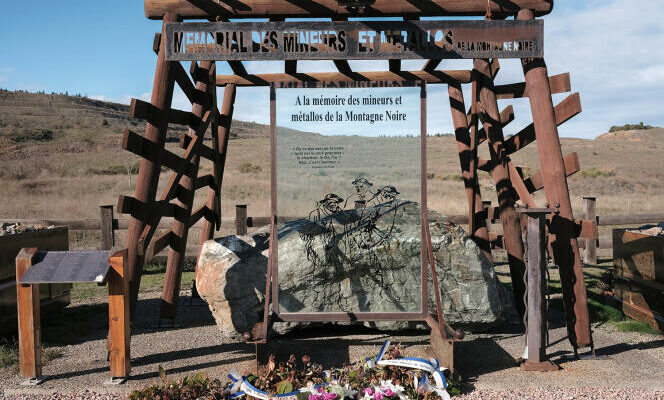On January 31, 2024, in Salsigne, in Aude, a memory hole should be filled. Eighty years after their arrest, a ceremony must honor for the first time the memory of thirteen Jews rounded up by the Nazis and deported by convoy 68 which left Drancy on February 10, 1944.
Working in the gold mines that sustained this region of the Black Mountain, they were arrested at their workplace and pushed into a truck by German soldiers. Only one returned from Auschwitz. So long later, a prayer for the dead should be said by Ann-Gaëlle Attias, a rabbi from Toulouse: a kaddish for these victims and also against the oblivion which buried this event.
This return to memory owes a lot to Robert Montané, 70 years old. A complete character, pure and hardline communist, former delegate of the CGT, he was a miner from 1975 to the closure of the Salsigne site in 2004. Every December 4, he was the union’s standard bearer at the commemorations of Sainte-Barbe , the patron saint of miners. “I knew that miners had died from accidents, from silicosis, from cancer, assures those who themselves have a body full of pollutants accumulated during their activity. I didn’t know that some had been victims of deportation. I knew nothing about the January 31 roundup. »
Cheap labor
Their names were Joseph Coifman, Mathias Gartner, Max Gold, Jacques Harth, Carl Kampelmacher, Chaïm Rawicki, Robert Grün, Tibor Jaeger, Ladislas Knopf, David Goldstein, Mayer Stern, Louis Kantorowitz, Leopold Schloss. Lives seem erased. Even the Parisian collection of the Shoah Memorial is almost silent on them. All that remains of these deportees is their names on the list of convoy 68, receipts for their property and a photo for four of them.
We just know that they came from Romania, Austria, Hungary, Poland, Germany. Fleeing Nazi persecution, they thought they had found refuge in France. They had been sent to Salsigne as part of the foreign worker groups created by Vichy, which provided low-cost labor to factories or mines.
The memory of the January 31 roundup resurfaced thanks to Martial Andrieu, a lyric singer from Carcassonne, passionate about history. In 2016, as soon as the archives opened, the autodidact immersed himself in the report of the trial, in July 1945, of René Bach, an Alsatian who had placed himself in the service of the Gestapo. In the midst of all the misdeeds of this man, who was shot the following September 6, Martial Andrieu discovered his participation in a raid in Salsigne, on January 31, 1944.
You have 55% of this article left to read. The rest is reserved for subscribers.
